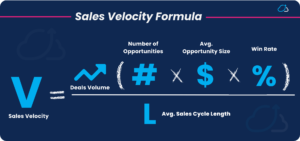Nextian Quote-to-Cash Implementation Process Overview
Nextian Quote-to-Cash (QTC or Q2C) is a software platform designed to help Cloud and Communications providers accelerate revenue growth and increase customer lifetime value.
The platform offers a suite of individual modules, including CPQ, order management, service management, customer portal, and more spanning the entire QTC spectrum. These modules can be deployed à la carte, allowing businesses to implement them in the order that best fits their needs.
Given that implementations can involve various teams — Nextian experts, in-house IT staff, and third-party systems integrators — establishing a consistent and effective implementation process is crucial.
This post provides a high-level, best-practice Nextian Quote-to-Cash implementation blueprint, ensuring smooth delivery and customer success.
Establishing Business Objectives
As with any large, transformative project, business objectives should remain the primary focus and not be overshadowed by technical details.
Nextian employs its proprietary Z-Model for Quote-to-Cash Optimization to help customers prioritize their initiatives effectively. This two-dimensional matrix integrates the Quote-to-Cash process flow with the income statement, offering a structured approach to decision-making:
The Z-Model guides the selection of modules, defines the scope of deployment for each module, and provides essential input for identifying success criteria and key performance indicators (KPIs) during the Discovery phase.
The model also helps identify which Nextian modules are required and establish the detailed project plan. For more information about the Z-Model, refer to this post.
Nextian Quote-to-Cash Implementation: Key Project Phases
Although the scope of the implementation may vary, the overall sequence of project phases typically follows a consistent structure. This sequence can be visualized as shown below, with multiple implementation phases for each individual module (e.g., CPQ, Order Management, etc.):
Each phase is explained in detail in the following sections.
| Phase 1 | Discovery |
The Discovery phase lays the foundation for the project. Its primary objectives include:
- Identifying gaps between the current and desired states.
- Establishing success criteria.
- Reviewing associated key performance indicators (KPIs).
- Ensuring stakeholder alignment.
The Discovery process encompasses two key aspects:
- Business Aspect: Define the business problems to be addressed, set clear objectives, and establish measurable success criteria.
- Technical Aspect: Understand the current technical landscape as well as envision the future state.
| Phase 2 | Preparation |
The Preparation phase focuses on establishing the necessary infrastructure and processes for a smooth project execution. This includes setting up project management tools (e.g., project workbooks, documentation, support portal access) and configuring Salesforce and other sandbox environments.
Sandboxes are essential for making and testing changes before deploying them to production. Nextian recommends the following setup for optimal development and testing:
- Production Environment: The live environment where the end-users perform their work.
- Development Sandbox(es): Dedicated environments where changes are implemented, reviewed, and initially tested.
- Full Sandbox(es): Complete replicas of the production environment, used for final testing under production-like conditions.
The recommended workflow for these environments is as follows:
Implement (Development Sandbox) → Review (Development Sandbox) → Test (Full Sandbox) → Deploy (Production Environment)
| Phase 3 | Implementation |
At Nextian, we embrace agile project management to ensure efficient and flexible delivery. Our approach is based on the following principles:
- Breaking down work into small, manageable steps.
- Frequent business reviews of individual functionality pieces.
- Daily, brief calls with customers to review progress and plan the next 1–2 days of work.
The key goals of this approach are to:
- Minimize inefficient email communication.
- Empower customers to continue with their daily jobs without major disruptions.
- Reduce the risk of making costly, “big” decisions by progressing in smaller, manageable steps.
- Deliver value to customers as quickly as possible.
| Phase 4 | Data Migration and Cleanup |
It is likely that data will have to be migrated into Salesforce from other systems during implementation. Depending on the deployed Nextian modules, this data may include subscription information, product catalogs, accounts, locations, contacts, and more.
It is best to implement data migrations as an incremental process where:
- Multiple data imports occur throughout the project.
- Imports begin with a limited set of objects and fields and are expanded with each run.
While duplicate or inaccurate data may not pose significant issues when Salesforce is used solely as a CRM, the stakes are much higher when additional modules such as service management or support are introduced. For instance, if duplicate accounts exist, services created under each duplicate could lead to incorrect account statistics (e.g., revenue, purchased products, support cases).
As a result, data consolidation and cleanup are essential to achieving an accurate and reliable view of the business.
See this post for information on effective data cleanup strategies.
| Important | Efforts related to data migration are often underestimated and can quickly bubble up to a project of its own. |
| Phase 5 | Security Configuration |
When using Salesforce only for CRM, out-of-the box configuration is usually sufficient along with minimum changes to the user roles and their hierarchy.
For orders, service management, advanced account analytics, etc., additional security modifications are required (departmental apps, profiles, permission set groups, etc.) to protect sensitive data.
See this post for more information on Nextian approach to Salesforce security.
| Phase 6 | Rollout |
Nextian recommends soft launch / full go-live approach to rollouts. A soft launch is a go-live with limited scope (a single customer, limited team or only one product).
The goal is to validate that the system works as intended, minimizing risks at the same time. The full go-live follows once all the issues discovered during the soft-launch have been resolved.
Both soft launch and the full go-live usually require a lot of end-user assistance from the implementation team.
| Phase 7 | End-User Training |
End-user training in transformation projects presents significant challenges. Despite substantial budgets and extensive time spent in training sessions, the outcomes are often unsatisfactory once systems go live.
At Nextian, we recommend reallocating resources towards post-go-live user support rather than focusing solely on pre-go-live training. Providing on-the-job support through dedicated personnel helps users resolve issues in real time, making it the most effective training method.
Additionally, user shadowing can be employed to identify common problems, uncover process bottlenecks, and gather valuable user feedback for ongoing improvements.
For more insights on how to succeed with end-user training in digital transformation projects, see this this post.
Conclusions
The Nextian Quote-to-Cash implementation process is designed to be lightweight and effective, and has been validated through successful customer engagements.
Built on agile project management principles, the process emphasizes transparency and active customer involvement. Its key objectives include:
- Achieving business goals.
- Ensuring customer success.
- Demonstrating value and realizing ROI quickly.
- Enabling innovation.
- Ensuring cost-effective delivery.
The process begins with a formal method for establishing and prioritizing initiatives, followed by the iterative implementation of individual modules. It concludes with comprehensive user training and a seamless go-live phase. Throughout the journey, data security, migration, and cleanup are treated as integral components of the delivery process.
Nextian is a vendor of Quote-to-Cash (QTC) software for cloud and communications helping providers accelerate growth and increase customer lifetime value.
Contact us today to find out how we can help you!






